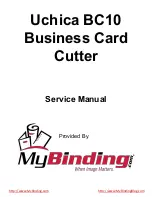15
WASHING:
Cleaning Your Harness - If your harness is dirty, you can wash
it by hand or in a front-loading commercial washing machine. Use a PMI®
Laundry bag for keeping the harness from getting tangled/damaged when
washing in a machine. Wash harness by using cool to warm water <30°C
(<86°F) with a mild soap. PMI recommends using PMI® Rope Soap;
otherwise non-detergent soaps are best. Soap used should not contain any
bleaching agents.
DO NOT:
• DO NOT use top loading washing machines with agitators because
they tangle/ damage the harness severely and can cause damage to the
machine.
• DO NOT use a commercial dryer to dry the harness.
• DO NOT leave a wet harness on a surface where contaminants may
leach (such as concrete).
• DO NOT expose the harness to exhaust fumes.
DISINFECTING:
Disinfection of a harness may occasionally become necessary,
such as when exposed to bloodborne pathogens. To disinfect a harness
from suspected bloodborne pathogens, PMI recommends following the NFPA
standard for cleaning rescue gear of bloodborne pathogens. Keeping in mind
that undiluted household bleach is known to damage nylon, NFPA calls for
using a diluted solution of household bleach to clean rescue gear. Add 60
ml of household bleach per 4 liters of tap water. That’s about one quarter
(1/4) cup of bleach per gallon of water. Be aware that some commercial
bleach solutions are stronger than the recommended 1.5% that is typical for
household bleach. Soak the gear in the diluted solution for ten minutes, then
rinse thoroughly with tap water.
The rinsing cycle is critical to prevent any damage to the nylon from the
bleach. It is good to soak the gear in tap water for the same amount of time it
soaked in the bleach solution. Never store gear while it is wet.
The use of bleach over a long period of time, in repeated uses, can cause
damage to fibers such as nylon. Disinfection of the harness using bleach
should be used sparingly and only when needed.
DRYING:
Dry your harness in a clean, dry area out of direct sunlight. For best
results, it should be hung up to air dry in a low-humidity environment. DO
NOT leave a wet harness on a surface where contaminants may leach (such
as concrete).
WRITE IT DOWN:
Remember to record the cleaning on the Equipment Log.
KEEP IT CLEAN:
Store your harness in a clean, dark, dry environment, away
from exposure to acids, other harmful chemicals, noxious fumes or other
abuse.
USER INSPECTION, MAINTENANCE & STORAGE OF
EQUIPMENT
(continued)
WARNING


















